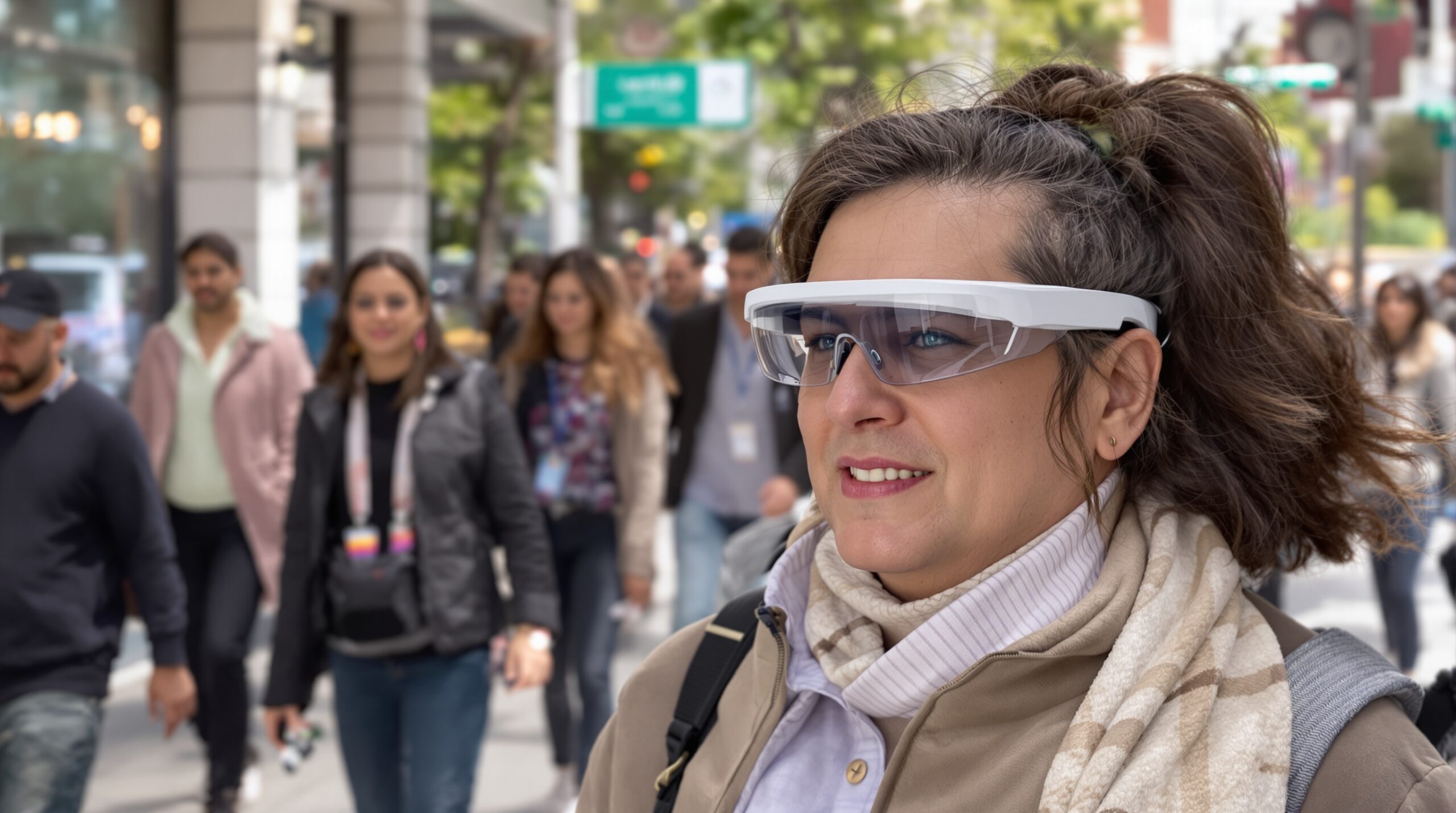Technological advancements have brought life-changing support to people with visual impairments. Among the most innovative are AI-powered glasses. These smart devices combine artificial intelligence and advanced optics to offer users increased independence. Their widespread adoption is quickly transforming accessibility and daily life for the visually impaired.
The Technology Behind AI-Powered Glasses
AI-powered glasses use a combination of cameras, tiny speakers, and advanced software. Their design allows them to interpret surroundings in real time. High-resolution cameras capture images while AI algorithms analyze visual data instantly. This combination enables the glasses to describe environments, read text, and identify obstacles.
The devices often connect to smartphones via Bluetooth. This connection enhances processing power and allows for frequent software updates. Developers continue to improve algorithms to enable the glasses to recognize an expanding list of objects and actions. All improvements contribute to a more seamless user experience for those with visual impairment.
Key Features of Modern AI Glasses
Modern AI glasses offer a wide range of features tailored to the needs of visually impaired users. Most notably, they provide real-time object recognition. The glasses identify everyday items like doors, chairs, and signs, and notify users through audio cues.
Another critical feature is text-to-speech conversion. Users can have printed or handwritten text read aloud, whether it’s a menu, street sign, or handwritten note. Some models support facial recognition, notifying users who is in front of them. Voice commands allow for hands-free operation, making the technology accessible for people with various levels of visual impairment.
Empowering Daily Independence
AI-powered glasses give visually impaired individuals unprecedented independence. Basic tasks that once required assistance can now be performed solo. For example, navigating a busy street or reading a product label at a grocery store becomes possible without outside help.
The glasses alert wearers to potential hazards, such as steps or uneven surfaces. They offer audio instructions for safe and efficient movement. These features help reduce anxiety and increase confidence for users, encouraging more active participation in society.
Before these smart devices, many people relied on traditional aids like white canes or guide dogs. While still valuable, these aids had their limitations. AI-powered glasses now offer an additional layer of information and safety, making them a strong complement to existing solutions.
Social Interaction and Inclusion
One of the major challenges for people with visual impairment is navigating social situations. AI glasses have the potential to break down barriers. Facial recognition technology helps users identify friends, family, and colleagues in group settings quickly.
Conversational AI also assists by quietly relaying who is speaking and, in some cases, summarizing spoken exchanges. These features support richer interaction, enabling wearers to maintain eye contact and participate more fully in conversations. As a result, AI-powered glasses promote a sense of inclusion and belonging.
Enhanced Navigation and Mobility
AI glasses are invaluable for navigating unfamiliar environments. GPS-enabled models provide walking directions and environmental descriptions. Obstacles or sudden hazards are detected and communicated through clear, timely audio prompts.
For instance, the glasses may announce an approaching intersection, warn about crosswalk signals, or guide users through complex buildings. Some devices even remember common routes and provide custom guidance for repeated destinations. These enhancements give visually impaired individuals greater freedom to travel independently.
Impact on Education and Employment
The educational and professional implications are immense. AI-powered glasses enable students to read textbooks and handouts independently. Instant access to visual information equals the playing field in classrooms and lecture halls.
In the workplace, employees can access computer screens, paperwork, and presentations through text-to-speech features. The ability to interact with colleagues visually also becomes less challenging. This increased autonomy helps visually impaired individuals pursue wider career opportunities and contribute more effectively in professional environments.
Leading Brands and Their Innovations
Several companies have pioneered AI-powered glasses for the visually impaired. OrCam, Envision, and Aira are notable names in this field. Each brand brings unique strengths to the market.
OrCam’s MyEye device clips onto any eyeglass frame. It reads text, recognizes faces, and identifies products discreetly through a miniature speaker. Envision Glasses leverage Google Glass hardware, offering real-time scene descriptions, color identification, and barcode scanning. Aira combines smart glasses with remote assistance from trained agents for detailed guidance in complex situations.
Challenges and Limitations
Despite their transformative potential, AI-powered glasses are not without challenges. High costs can make them inaccessible for some users. Battery life and device durability can also limit practical use, especially during long or demanding days.
Privacy concerns are another consideration. Devices that use cloud processing may transmit sensitive data. Companies must balance convenience with robust privacy protections. Advancements in on-device AI processing could minimize these security risks in the future.
The Road Ahead for AI Accessibility Devices
Continuous research is driving the next generation of AI-powered glasses. Future devices will likely offer lighter designs, enhanced battery life, and improved object recognition. Customizable audio feedback and greater language support will open accessibility to even more people around the world.
Collaboration between tech companies, healthcare providers, and advocacy groups will hasten adoption and lead to more affordable pricing. As artificial intelligence becomes more sophisticated, the glasses will provide deeper insights and context, further transforming the experience of visually impaired users.
Conclusion
AI-powered glasses are revolutionizing accessibility for the visually impaired by offering unprecedented independence, rich social experiences, and professional opportunities. While challenges remain, ongoing innovation is rapidly expanding its reach and capabilities. As this technology evolves, it promises to make the world a more inclusive place for millions of people with visual impairments.

